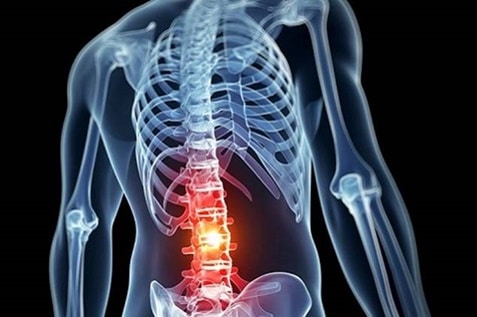We’ve all become familiar with the idea that sitting for long bouts of time can be bad for our health. Maybe it’s the steady increase of working hours, or maybe it’s the awareness of the overall decline in our health caused by too much long-term sitting, the subject of some scientific studies in recent years.
But the fact of the matter is this: the environment we live and work within can impact our health far beyond our immediate and present comfort. New research in the fields of health and workplace ergonomics has aimed to quantify the damage caused by long-term sedentary behaviour.
New research shows each hour of sedentary time is associated with a 22 percent increased risk of developing type 2 diabetes.
Prolonged sitting times have been found to increase our risks for several types of serious health ailments like:
- Diabetes
- Heart Disease
- Cancer
So aside from first aid and safety training to address these health risks, better lifestyle at work should be practised. But while many of us have traditionally thought of regular exercise as a cure-all to this issue, the fact of the matter is that just reducing sedentary behaviour alone can have a dramatic difference.
In fact, just swapping just 1 hour of sitting each day with standing results in a 5% decrease in risk of early death.
Understanding the negative impacts is only half of the equation; finding solutions that are practical for everyday life is what sets the research into productive motion. Here are our top 8 tips for reducing sedentary behaviour at your workplace.
1. Standing Desks
Sit-to-Stand, or height-adjustable desks are all the rage today, and rightly so. But if you thought you had to spend big to get in on this trend, you couldn’t be more wrong. A new product has just hit the market in the USA, a low-cost standing desk made out of cardboard, and is expected to be available in Australia soon.
A study reported in American Journal of Preventive Medicine found that employees with sit-stand desks stand for 1 hour more a day at work and that the walk an additional 6 minutes a day at work, burning an extra 87 calories on average.
2. Simple, Quick Exercises
Many find that a full-blown workout simply isn’t compatible with their everyday lives, but quick, simple and gentle exercises can easily be worked into a regular workday. Check out a few that were featured in UK’s The Independent.
3. Take Breaks
Repetitive strain injuries can happen when your employees are lassoed to their seats without regular breaks, representing a direct health cost to fit alongside the indirect potential costs of losing productivity. Encourage breaks with reminders, or with computer programs like Stretch Break which address repetitive strain injuries by reminding employees to take breaks while also reinforcing good posture.
Keep in mind that that it’s important not only to stretch during a break, but to actually stand up and move around as well. Additional tips on taking effective breaks that result in improved relaxation and focus include:
- Allot breaks during the most beneficial times of the day, which studies have shown to be during the morning hours. Morning breaks result in higher motivation and energy for employees compared to afternoons when we’re already feeling sluggish.
- Employees need to use breaks for activities they actually enjoy, whether work-related or not, which results in higher morale, happiness, and energy. Just pick something you like doing, whether it’s a work task that involves walking around,
- Several short breaks are better than one long break, as they can help break up the monotony of a long workday.
4. Pedometers
Pedometers can track your movements throughout the workday, and other devices are available too. While they won’t make employees stand up on their own, devices like these do provide a way to track your progress in encouraging more activity, as well as some inspiration and recognition. A new personal monitoring device tests your sweat, which you can check out here.
5. The Workplace
For employees, it’s increasingly important to choose a company that values the health and wellbeing of its staff. You can gauge this from surveys, turnover rates, health care costs or just by bringing workers and managers together for an open chat. From the organisation’s perspective, making employee health and wellbeing a priority will show your care and support, making it more likely that you’ll see the benefits of a reduction in workplace sedentary behaviours when tackling the issue. Business News Daily recently featured some thoughts on how to harness your intellectual capital to promote wellbeing.
From the organisation’s perspective, making employee health and wellbeing a priority will show your care and support, making it more likely that you’ll see the benefits of a reduction in workplace sedentary behaviours when tackling the issue. Business News Daily recently featured some thoughts on how to harness your intellectual capital to promote wellbeing.
6. Target Sitting Times, Not Exercise
Some recent studies have shown that it’s not the amount of exercise that counts. Rather, the single biggest factor is how long you’re sitting down on a regular basis. Exercise sure does help, but make sure you’re focusing on reduction of sedentary behaviours rather than just the promotion of more exercise, and start by looking at the workday.
7. Anything Helps
Aside from breaks during the workday, other lifestyle changes that make a lasting impact include walking or cycling to the office instead of driving (and even taking the bus has been shown to make a measurable difference in one UK study), and reducing TV-time in the evenings or watching TV while exercising. Lifestyle changes that give you more energy, such as a more nutritious diet or better sleep quality, will also keep you on track to be more active.
8. Partner with an Ergonomics Provider
When you partner up with an ergonomics provider or organisation, you’re committing to include health, safety and comfort as part of your organisation’s values. It will get your entire team together and teach the principles of ergonomics and workstation setup, or take a personalised approach and work one-to-one with each staff member, at their workstations, to optimise setup, review good habits for everyday tasks and suggest some stretches to use throughout the day. It will also bring activities like Pilates, yoga, boxing or fitness workouts to your office on a weekly basis.
Improve the health of your employees and yourself by targeting your sitting times and making concentrated efforts on the reduction of those times. A quick glance at your office as well as the regular habits of your employees can reveal a lot about sedentary behaviours of your employees. Sometimes, simple changes to the workday can result in improved workplace health across the board.
HSG offers Ergonomics Workshops tailored to your industry and your objectives, for all major cities across Australia. We also provide Workplace Ergonomic Assessments, where an occupational health expert will visit each employee’s workstation for a personal mini-consultation.

Alsco would like to thank Holistic Services Group for this article. Holistic Services Group is a leading provider of corporate wellness solutions and well-being programs in most major cities in Australia. If you’re looking for corporate wellness program ideas, visit www.holisticservices.com.au.
Always make your staff’s health and safety a priority, get fully-managed first aid kits from Alsco. Alsco have the kit for your company’s unique needs. Enquire now! Our friendly and informed staff are waiting to help.

